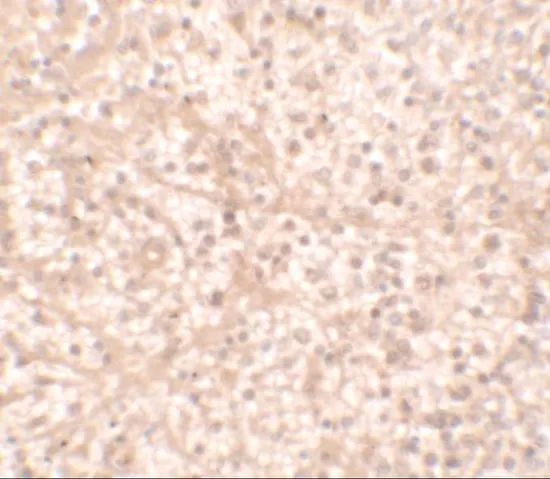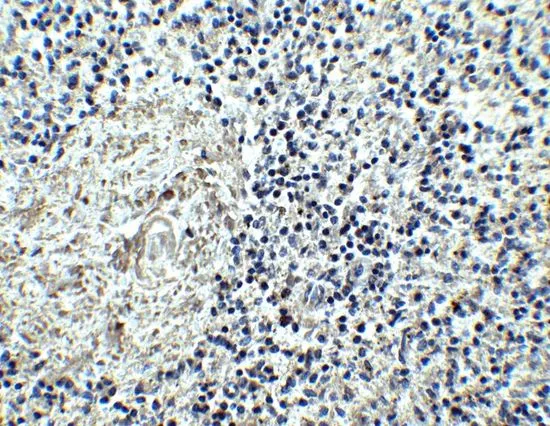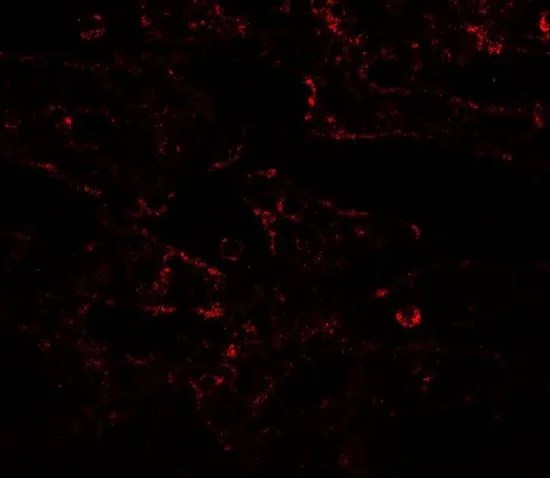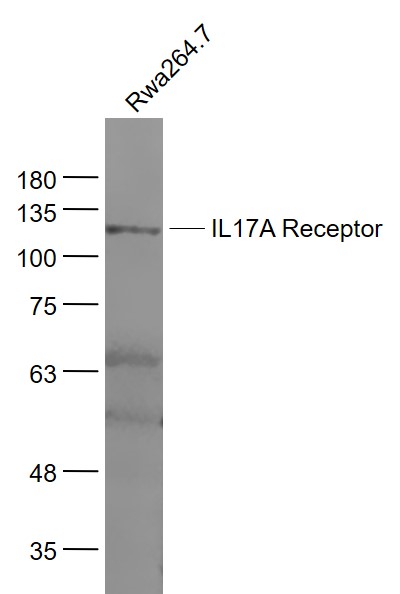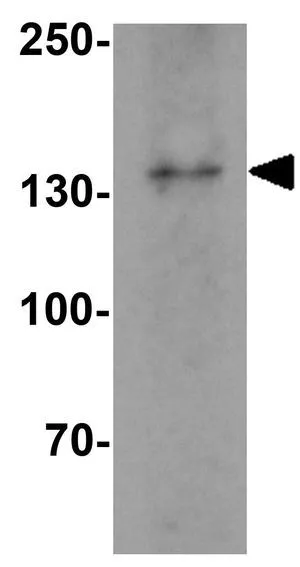
WB analysis of A-20 cell lysate using GTX16598 IL17 Receptor alpha antibody. Working concentration : 1 microg/ml
IL17 Receptor alpha antibody
GTX16598
ApplicationsWestern Blot, ELISA, ImmunoHistoChemistry, ImmunoHistoChemistry Paraffin
Product group Antibodies
TargetIL17RA
Overview
- SupplierGeneTex
- Product NameIL17 Receptor alpha antibody
- Delivery Days Customer9
- Application Supplier NoteWB: 1 - 2 microg/mL. *Optimal dilutions/concentrations should be determined by the researcher.Not tested in other applications.
- ApplicationsWestern Blot, ELISA, ImmunoHistoChemistry, ImmunoHistoChemistry Paraffin
- CertificationResearch Use Only
- ClonalityPolyclonal
- Concentration1 mg/ml
- ConjugateUnconjugated
- Gene ID23765
- Target nameIL17RA
- Target descriptioninterleukin 17 receptor A
- Target synonymsCANDF5, CD217, CDw217, IL-17RA, IL17R, IMD51, hIL-17R, interleukin-17 receptor A, IL-17 receptor A
- HostRabbit
- IsotypeIgG
- Protein IDQ96F46
- Protein NameInterleukin-17 receptor A
- Scientific DescriptionInterleukin 17A (IL17A)is a proinflammatory cytokine secreted by activated T-lymphocytes. It is a potent inducer of the maturation of CD34-positive hematopoietic precursors into neutrophils. The protein encoded by this gene (interleukin 17A receptor; IL17RA) is a ubiquitous type I membrane glycoprotein that binds with low affinity to interleukin 17A. Interleukin 17A and its receptor play a pathogenic role in many inflammatory and autoimmune diseases such as rheumatoid arthritis. Like other cytokine receptors, this receptor likely has a multimeric structure. [provided by RefSeq, Jul 2008]
- Storage Instruction-20°C or -80°C,2°C to 8°C
- UNSPSC12352203
References
- Farouk S, Sabet S, Abu Zahra FA, et al. Bone marrow derived-mesenchymal stem cells downregulate IL17A dependent IL6/STAT3 signaling pathway in CCl4-induced rat liver fibrosis. PLoS One. 2018,13(10):e0206130. doi: 10.1371/journal.pone.0206130Read this paper

